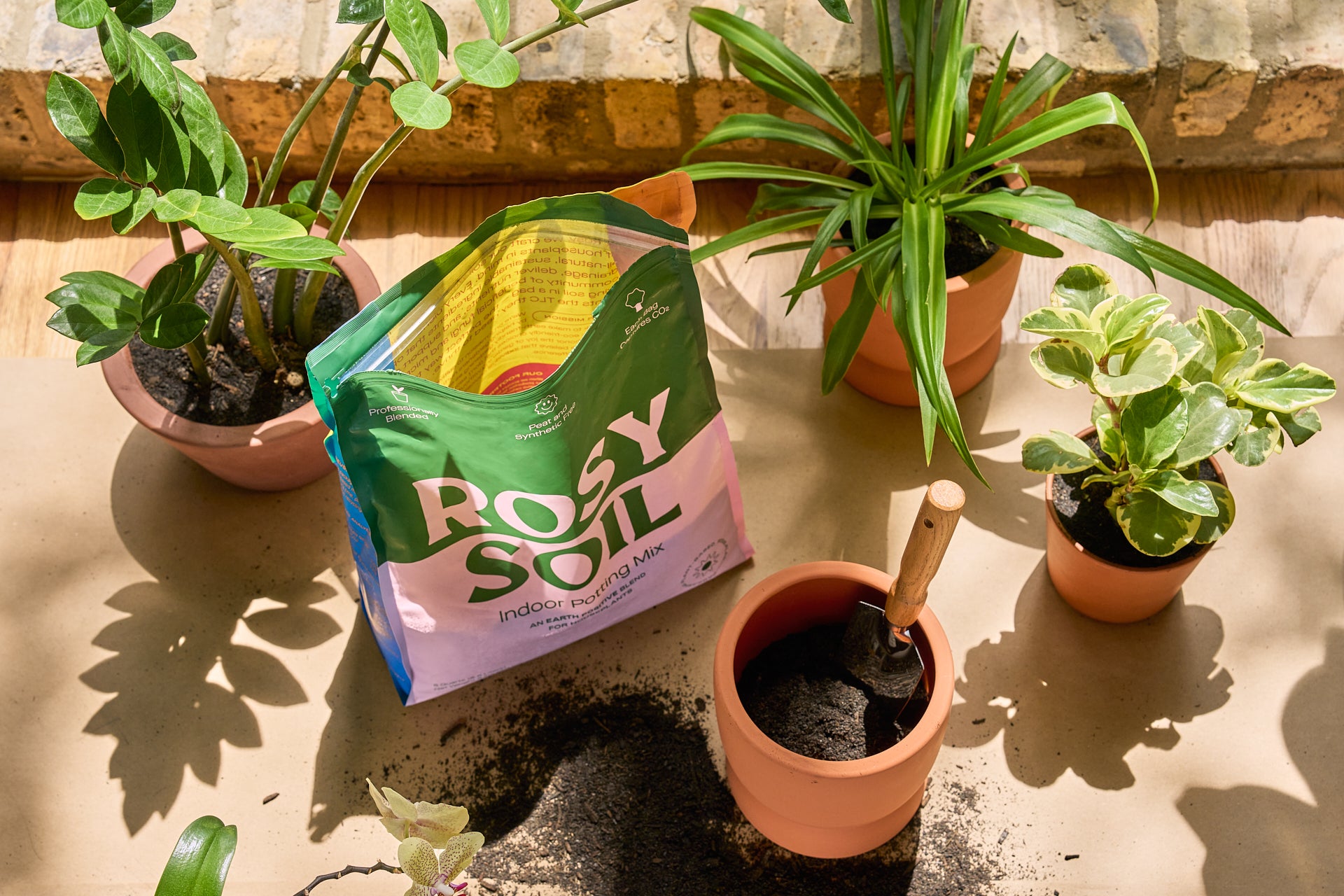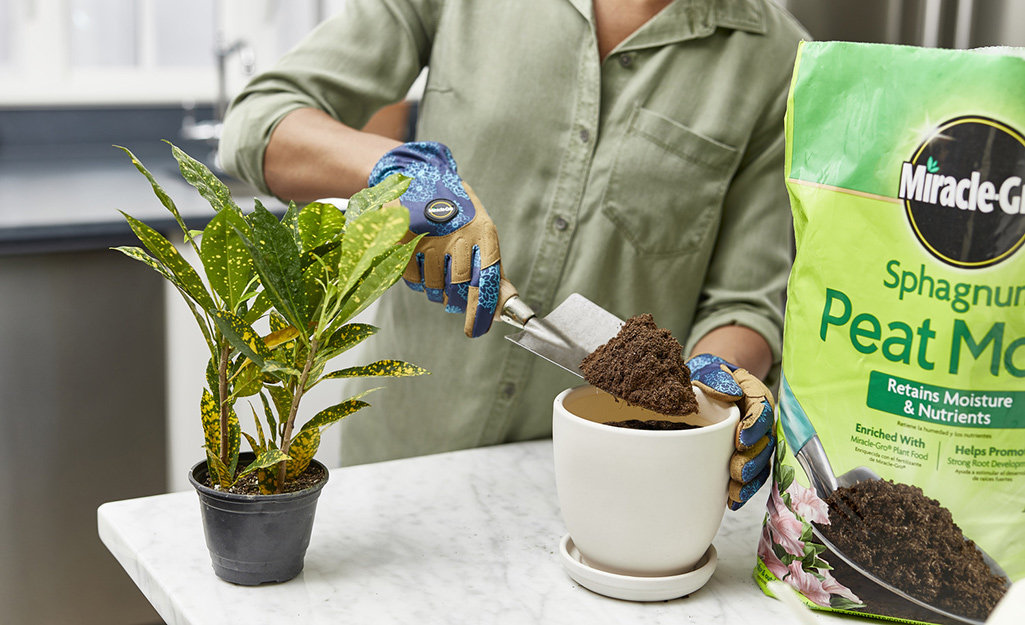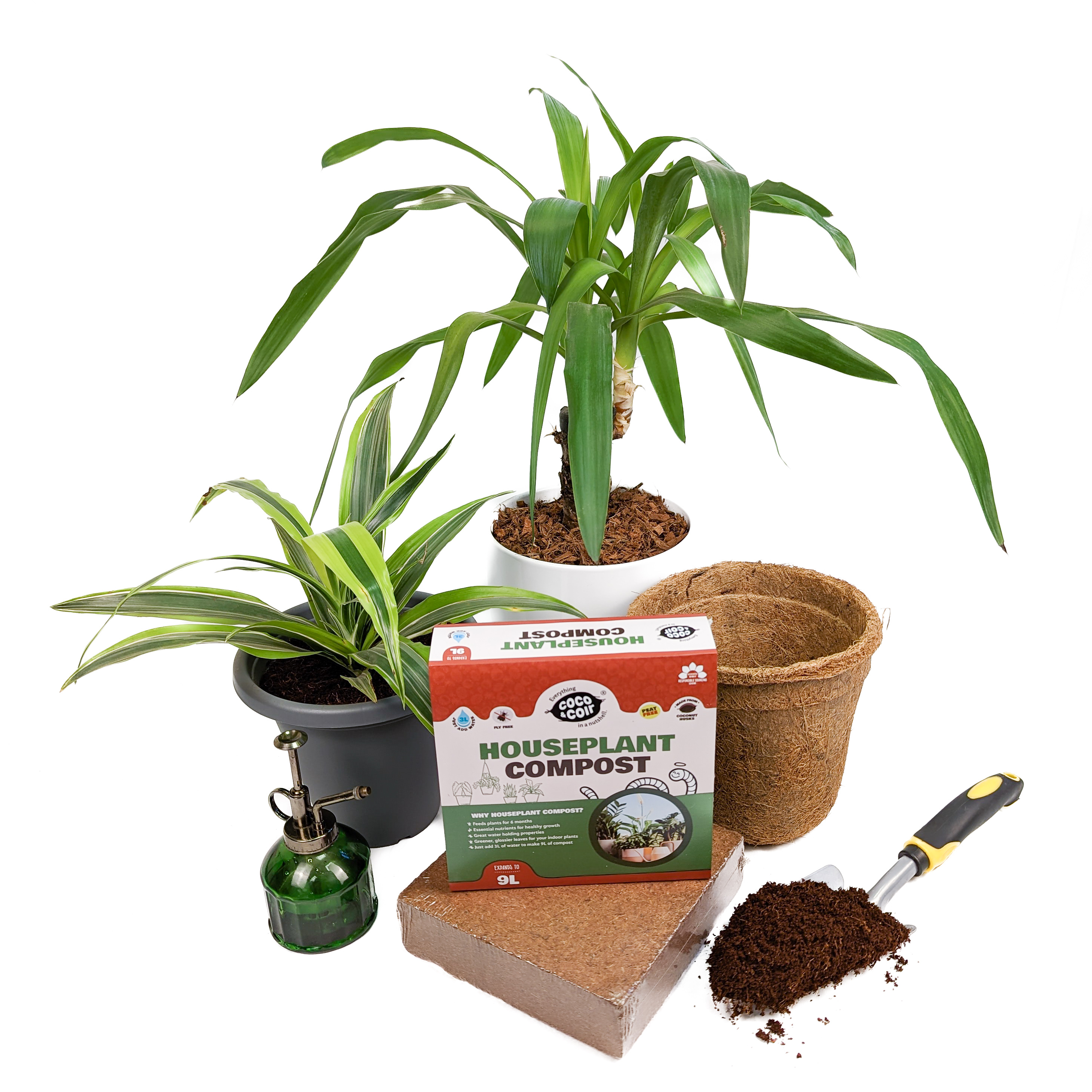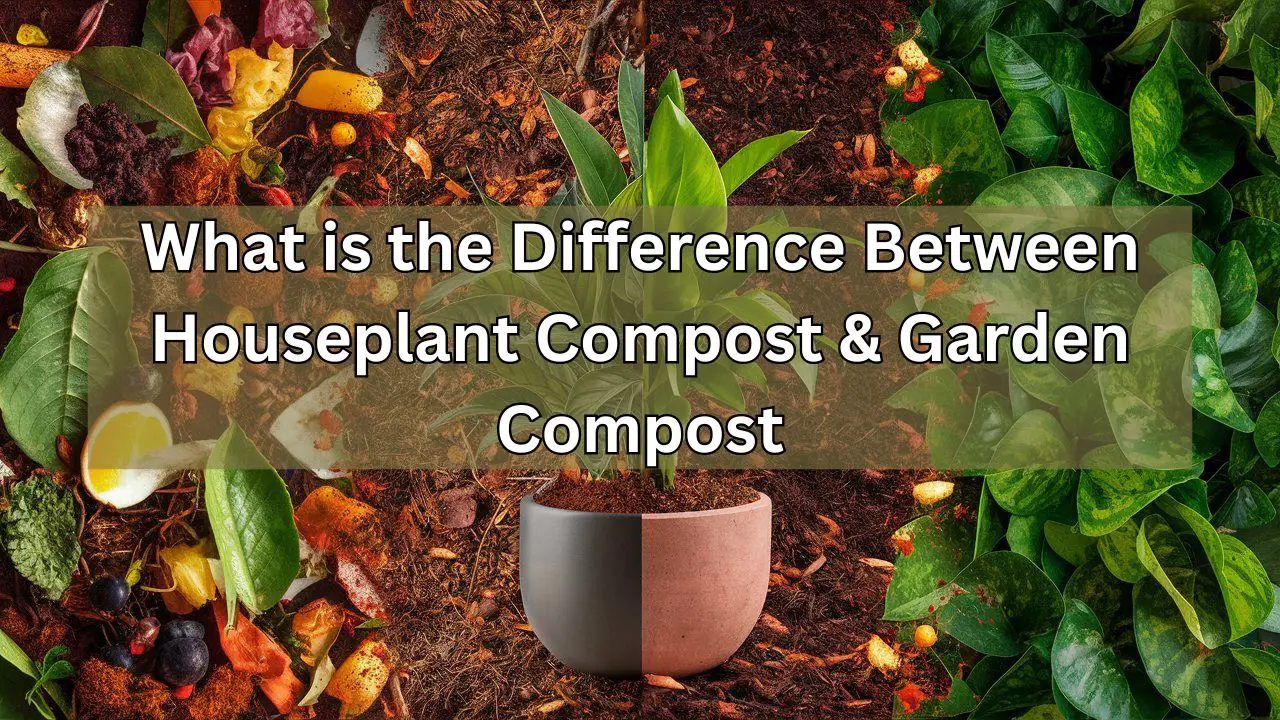Houseplant compost is specially formulated for indoor plants, offering balanced nutrients. Garden compost is more general and suited for outdoor use.
Houseplant compost provides a finely-tuned balance of nutrients, moisture retention, and aeration. It’s designed to meet the specific needs of indoor plants, ensuring they thrive in confined spaces. Garden compost, on the other hand, is more varied and typically contains a mix of organic matter like leaves, grass clippings, and kitchen waste.
This type of compost is ideal for enriching garden soil, improving its structure, and boosting nutrient levels. Both types of compost serve essential roles but are formulated to support different plant environments. Choosing the right compost can significantly impact plant health and growth.

Credit: rosysoil.com
Introduction To Composting
Composting is a natural process. It turns organic waste into valuable soil. Both houseplant and garden compost come from this process. They have different uses and benefits.
Benefits For Plants And The Environment
Composting offers many benefits. It enriches the soil and helps plants grow. Compost also reduces the need for chemical fertilizers. This is good for the environment.
Key Components Of Compost
Compost is made from organic materials. These include food scraps, yard waste, and other biodegradable items. The key components are:
- Green materials: These are rich in nitrogen. Examples include fruit peels and vegetable scraps.
- Brown materials: These are rich in carbon. Examples include dry leaves and cardboard.
- Water: Moisture is needed for the composting process.
- Air: Oxygen helps break down the materials.
Both houseplant and garden compost use these components. The difference lies in their specific formulations and uses.
Houseplant Composting Basics
Houseplant composting is a great way to provide your indoor plants with rich, organic material. Understanding the basics helps you create the best compost for your houseplants. This guide covers suitable materials, methods, and containers for houseplant composting.
Suitable Materials And Scraps
Using the right materials is crucial for successful houseplant composting. Here are some suitable materials and scraps:
- Fruit and vegetable scraps – Apple cores, banana peels, and carrot tops.
- Coffee grounds – Used coffee grounds are excellent for compost.
- Eggshells – Crushed eggshells add calcium to the compost.
- Tea bags – Ensure they are made of compostable material.
- Green plant clippings – Small amounts of green clippings are beneficial.
Methods And Containers
Different methods and containers can be used for houseplant composting. Here are some popular options:
- Vermicomposting – Using worms to break down organic material.
- Bokashi composting – A fermentation process using a special bran.
- Small compost bins – Perfect for kitchen counters or balconies.
- Compost tumblers – Easy to turn and manage compost.
Choose the method and container that fits your space and lifestyle. Proper aeration and moisture levels are essential for effective composting.
Garden Composting Techniques
Garden composting techniques are vital for creating rich, fertile soil. This section will help you understand effective methods for composting in your garden.
Outdoor Composting Setups
Outdoor composting setups are crucial for successful garden composting. You can use different methods to create an efficient composting system.
- Compost Bins: These bins help contain and manage compost piles.
- Compost Tumblers: Tumblers make turning compost easier.
- Open Piles: Open piles are simple but may attract pests.
Choose a method based on your garden size and needs. Each setup has unique benefits and challenges. Keep your compost in a sunny spot to speed up decomposition.
Composting Large Volumes
Composting large volumes requires careful planning. Large compost piles generate more heat, aiding decomposition.
- Layering: Alternate layers of green and brown materials.
- Turning: Turn the pile regularly to add oxygen.
- Moisture: Keep the pile moist, not wet.
Use a pitchfork to turn your compost pile. This helps mix materials and adds air. Proper moisture levels are crucial. Too much water can slow down decomposition. Too little water can dry out the pile.
For large volumes, you might consider a dedicated composting area. This area should be away from your home but accessible for adding materials.

Credit: www.homedepot.com
Nutrient Profiles
Understanding the nutrient profiles of houseplant compost and garden compost is essential. Each type of compost provides different nutrients. These nutrients are crucial for the healthy growth of your plants.
Comparing Nutrient Content
Houseplant compost has a unique nutrient mix. It often contains more specific nutrients like trace minerals and slow-release fertilizers. This helps houseplants thrive in indoor conditions.
Garden compost, on the other hand, is richer in general nutrients. It typically contains high levels of nitrogen, phosphorus, and potassium. These nutrients support a wide variety of outdoor plants.
| Compost Type | Key Nutrients | Ideal For |
|---|---|---|
| Houseplant Compost | Trace minerals, Slow-release fertilizers | Indoor plants |
| Garden Compost | Nitrogen, Phosphorus, Potassium | Outdoor plants |
Tailoring To Plant Needs
Choosing the right compost depends on your plant’s needs. Houseplants need a balanced mix of nutrients. Too much nitrogen can harm them. Garden plants, like vegetables and flowers, need more nitrogen and other macronutrients.
- Houseplants: Need trace minerals and balanced nutrients.
- Garden plants: Require high levels of macronutrients.
By understanding these differences, you can provide the right nutrients. This ensures your plants grow strong and healthy.
Decomposition Dynamics
Decomposition is a key process for composting. It breaks down organic matter into nutrient-rich soil. This process varies between houseplant compost and garden compost. Understanding decomposition dynamics helps in choosing the right compost.
Speed Of Breakdown In Different Environments
Houseplant compost decomposes slower inside homes. The indoor environment is controlled. Temperature and humidity levels are stable. This slows down the decomposition process.
Garden compost decomposes faster outside. The outdoor environment is more dynamic. Temperature and humidity fluctuate. Microorganisms thrive in these conditions. This accelerates the breakdown of organic matter.
Factors Affecting Decomposition Rates
Several factors influence decomposition rates. Temperature is a primary factor. Higher temperatures speed up decomposition. Lower temperatures slow it down.
Moisture levels also play a crucial role. Adequate moisture supports microbial activity. Too much or too little water hinders decomposition.
Aeration impacts the process too. Oxygen is essential for aerobic bacteria. Regular turning of compost piles increases aeration.
Composition of materials affects breakdown speed. Green materials like vegetable scraps decompose quickly. Brown materials like leaves take longer.
| Factor | Impact on Decomposition |
|---|---|
| Temperature | Higher temperatures speed up decomposition. |
| Moisture Levels | Adequate moisture supports microbial activity. |
| Aeration | Oxygen is essential for aerobic bacteria. |
| Material Composition | Green materials decompose quickly. Brown materials take longer. |
Odor And Pest Management
Managing odor and pests is crucial for both houseplant compost and garden compost. Each type of compost has its own challenges and solutions for keeping your plants healthy and your space pleasant.
Controlling Odor In Indoor Compost
Houseplant compost is often kept indoors. Strong odors can be a problem. To control indoor compost odor, follow these steps:
- Use a compost bin with a lid.
- Add dry materials like paper or leaves.
- Avoid adding meat or dairy products.
- Turn the compost regularly to aerate it.
- Keep the compost slightly moist but not wet.
These steps help reduce bad smells and keep your indoor space fresh.
Keeping Pests Away From Garden Compost
Garden compost is often exposed to the outdoors. This can attract pests. To keep pests away, consider these tips:
- Cover the compost with a tarp or lid.
- Use a compost bin with a secure lid.
- Avoid adding food scraps that attract pests.
- Turn the compost to discourage nesting.
- Use natural repellents like neem oil.
These practices help keep your garden compost pest-free and healthy.
| Type of Compost | Odor Control | Pest Management |
|---|---|---|
| Houseplant Compost | Use a lid, add dry materials, avoid meat/dairy | Not usually an issue |
| Garden Compost | Turn regularly, keep moist | Cover, use secure bin, avoid food scraps |
Compost Application
Understanding how to use compost effectively is essential for plant health. Houseplants and garden plants have different needs. Let’s explore the best practices for using compost in both scenarios.
Best Practices For Houseplants
Houseplants thrive with a mix of nutrients. Use a special houseplant compost. It is light and airy. This helps the roots breathe.
Follow these steps:
- Mix 1 part compost with 2 parts potting soil.
- Fill the pot halfway with this mix.
- Place the plant in the pot.
- Fill the rest of the pot with the mix.
- Water the plant well.
Don’t use garden compost for houseplants. It is too heavy and dense. It may cause root rot.
Incorporating Compost In Garden Soil
Garden plants need rich, fertile soil. Garden compost is perfect for this. It is heavier and full of nutrients.
Follow these steps:
- Clear the garden area of weeds.
- Spread a layer of compost on the soil.
- Mix the compost into the top 6 inches of soil.
- Plant your seeds or seedlings.
- Water the garden well.
Use garden compost to improve soil structure. It helps retain moisture. It also provides essential nutrients.
| Houseplant Compost | Garden Compost |
|---|---|
| Light and airy | Heavier and nutrient-rich |
| Prevents root rot | Improves soil structure |
| Special mix for indoor plants | Best for outdoor plants |

Credit: cocoandcoir.com
Troubleshooting Common Issues
Houseplant compost and garden compost are essential for healthy plants. Sometimes, common issues can arise. Troubleshooting these problems ensures your plants thrive.
Dealing With Mold And Mildew
Mold and mildew can appear in both houseplant and garden compost. These fungi thrive in moist environments. To manage them, follow these steps:
- Remove infected plant material immediately.
- Improve air circulation around the compost.
- Avoid overwatering your compost.
- Use a fungicide if necessary.
Keeping your compost dry helps prevent mold and mildew. Ensure proper ventilation to reduce humidity.
Balancing Moisture And Aeration
Moisture and aeration are crucial for compost health. Too much moisture can cause bad odors. Too little can dry out compost.
To balance moisture, follow these tips:
- Water compost lightly and evenly.
- Check moisture levels regularly.
- Add dry materials like leaves if too wet.
- Mix in green materials if too dry.
Proper aeration is also key. Turn your compost regularly to keep it oxygenated. This prevents bad smells and helps decomposition.
| Issue | Solution |
|---|---|
| Overwatering | Add dry materials like leaves. |
| Dry compost | Mix in green materials like vegetable scraps. |
| Mold and mildew | Remove infected material, improve air circulation. |
| Bad odors | Turn compost regularly for aeration. |
Legal And Social Considerations
Understanding the difference between houseplant compost and garden compost involves more than just their composition. Legal and social considerations also play a crucial role. This section explores these aspects, ensuring you stay compliant and community-friendly.
Understanding Local Composting Regulations
Every region has its own composting rules. These regulations ensure safe and eco-friendly practices. Ignoring them can lead to fines or penalties.
Houseplant compost and garden compost may have different rules. Check your local guidelines to know the specifics. Here are some common regulations:
- Permissible compost materials
- Composting methods allowed
- Distance from water bodies and property lines
- Odor and pest control measures
Community Composting Initiatives
Many communities have composting programs. These initiatives can help manage waste effectively. Participating in these programs can provide several benefits.
Here’s a quick comparison table:
| Houseplant Compost | Garden Compost |
|---|---|
| Primarily indoor use | Outdoor garden use |
| Less volume of waste | More volume of waste |
| May include food scraps | Includes yard waste |
In community composting, ensure you follow specific guidelines. This includes separating compost types and avoiding contamination. Your participation makes a difference in waste management and environmental health.
Future Of Composting
The future of composting looks promising with new advancements. Composting helps reduce waste and improve soil health. Understanding the difference between houseplant compost and garden compost is vital. Both have unique benefits for plants and the environment.
Innovations In Composting Technology
Innovations in composting technology are making composting easier and faster. New compost bins are designed to speed up the process. These bins help break down organic waste quickly.
Some innovations include:
- Smart composters that monitor temperature and moisture.
- Electric composters that reduce waste volume.
- Composting solutions for urban settings.
These advancements make composting more accessible for everyone.
The Role Of Composting In Sustainable Living
Composting plays a crucial role in sustainable living. It helps reduce the amount of waste sent to landfills. Composting also enriches the soil with essential nutrients.
Houseplant compost and garden compost both contribute to this goal. Houseplant compost is ideal for indoor plants. Garden compost is perfect for outdoor gardens.
Benefits of composting include:
- Reducing greenhouse gas emissions.
- Improving soil structure and health.
- Minimizing the need for chemical fertilizers.
Embracing composting practices supports a healthier planet.
Frequently Asked Questions
Can I Use Garden Compost For Indoor Plants?
Yes, you can use garden compost for indoor plants. Ensure it’s well-decomposed and free from pests and diseases.
Is Houseplant Compost Different To Normal Compost?
Yes, houseplant compost differs from normal compost. It has a lighter texture and better drainage. Houseplant compost often contains additional nutrients tailored for indoor plants. It helps prevent waterlogging and root rot.
Can You Use Garden Soil For Houseplants?
Garden soil is not ideal for houseplants. It can compact easily, restrict drainage, and harbor pests. Use potting mix instead.
What Compost Is Best For Potted Plants?
The best compost for potted plants is a well-draining, nutrient-rich mix. Look for compost containing peat, perlite, and organic matter.
Conclusion
Houseplant compost is specially formulated for indoor plants, providing essential nutrients and proper drainage. Garden compost, on the other hand, is versatile, enriching outdoor soil with organic matter. Knowing the difference helps optimize plant health and growth. Choose the right compost to ensure your plants thrive, whether indoors or outdoors.

My mission is to help you bring the beauty of nature indoors with expert advice, detailed plant care guides, and creative design ideas.




